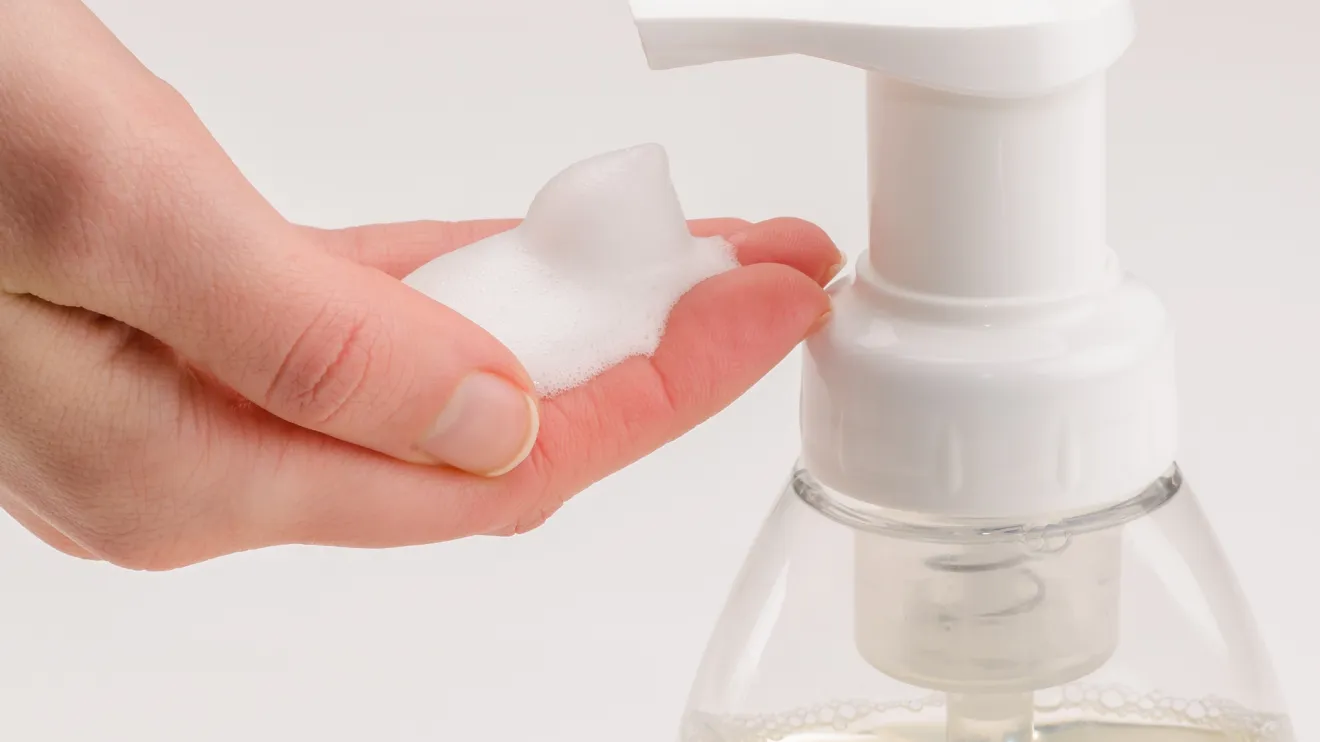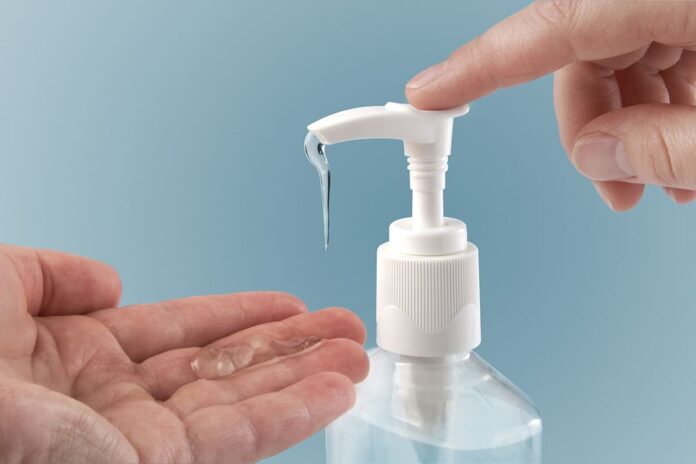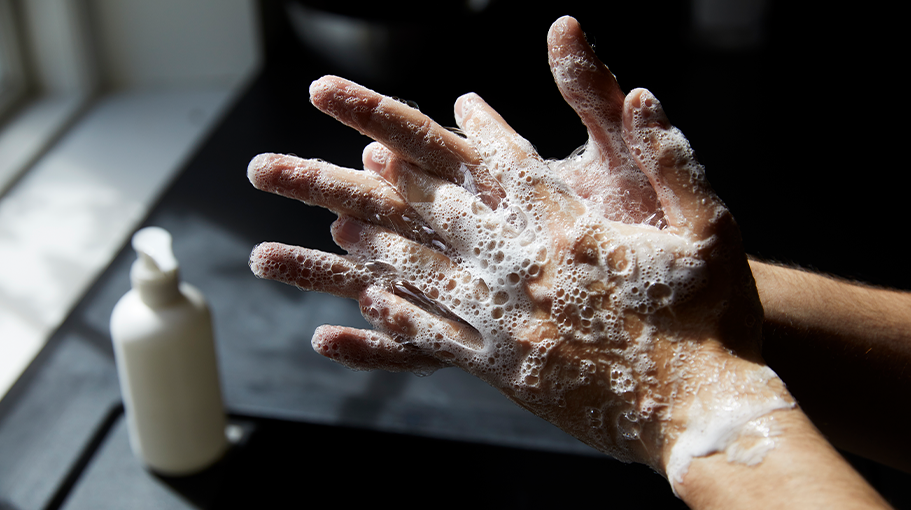Are you tired of using harsh soaps that leave your hands feeling dry and irritated? Look no further than foaming handwash! Not all skin types are created equal, however, and choosing the right product can make a world of difference. Whether you have sensitive skin or suffer from eczema, we’ve got you covered with our guide on selecting the best foaming handwash for your needs.
Understanding Different Skin Types

Imagine your skin as a unique canvas with its own set of peculiarities. Just like an artist understands the texture of the canvas to paint a masterpiece, understanding your skin type is essential to keep it healthy and vibrant. The human skin primarily falls into four categories: dry, oily, combination, and sensitive. Dry skin is often characterized by a rough texture and an insatiable thirst for moisture. Oily skin, in contrast, produces an excess of sebum, giving it a glossy appearance. Combination skin is like the maverick of the family, flaunting areas of both dryness and oiliness. Sensitive skin is the tender one, reacting with a pout or a rash to irritants.
Delving a little deeper, the diversity doesn’t stop at these four categories. Factors like age, hormones, climate, and even stress levels can influence your skin’s behavior. For instance, the skin may become drier as one age, or a change in hormonal levels might suddenly leave someone with an oily T-zone. Such fluctuations emphasize the importance of regular assessment and adaptation in care routines.
Like choosing a life partner, selecting the right skincare product requires understanding and catering to the unique needs and quirks of your epidermis. In the realm of cleanliness, this is where foaming handwash comes into play.
Importance of Using Foaming Handwash

Dancing bubbles of foaming hand wash don’t just bring joy; they also pack a punch in cleanliness. The magic is in the foam. It spreads more easily and uniformly, ensuring thorough coverage and cleansing. This makes it particularly effective in getting rid of dirt and grime, which is an indispensable routine in our daily lives.
A penny for your thoughts on this: foaming handwashes are economical. The dispensers release less soap in the form of foam, making the product last longer. This means fewer trips to the store and more pennies saved. But hold on; frugality does not compromise effectiveness. The lather is created to optimize the cleaning power, providing a balance that caters to both hygiene and economy.
Let’s not forget the environment. Foaming handwashes use less water to rinse off. Given the ongoing water crisis in several parts of the world, every drop saved is a step towards sustainability. The reduced soap usage also means less waste going down the drain, thus minimizing the environmental footprint.
Factors to Consider When Choosing Foaming Handwash

Set sail on your quest for the perfect foaming handwash by considering its ingredients. Gentle surfactants like sodium cocoyl glycinate and decyl glucoside are kinder to your skin than harsh detergents. Essential oils and natural extracts can offer additional skin benefits and a heavenly aroma to your cleaning routine.
Next, analyze the moisture-adding components. Glycerin, aloe vera, and panthenol are known for their ability to lock in hydration. For oily or acne-prone skin, opt for ingredients that regulate sebum production, like niacinamide or salicylic acid.
Lastly, be an informed consumer and scan for red flags. Parabens, sulfates, and synthetic fragrances are a big no-no. These may cause irritation or allergic reactions, especially for sensitive epidermis types.
Foaming Handwash for Dry Type: Best Options and Ingredients to Look for

Dry skin needs more than just hydration—it craves nourishment. Look for ingredients that not only moisturize but also lock in that moisture to prevent it from escaping. Hyaluronic acid is a potent hydrator that attracts water molecules, while ingredients like ceramides and fatty acids help reinforce the natural barrier, sealing in hydration for longer-lasting relief.
Glycerin, a common ingredient in many handwashes, is a humectant that draws water to the skin, promoting hydration. Shea butter and aloe vera are also excellent options for dry skin, providing soothing, intensive moisturization. Avoid handwashes containing alcohol or sulfates, as these can strip away the natural oils, exacerbating dryness.
Foaming Handwash for Oily or Acne-Prone Face: Recommended Products and Ingredients
Oily and acne-prone skin needs careful cleansing to remove excess oil without over-stripping, which can trigger more oil production. Ingredients such as salicylic acid, tea tree oil, and witch hazel can help regulate sebum, eliminate acne-causing bacteria, and soothe inflammation.
Moreover, ingredients like aloe vera, cucumber extract, and chamomile can help calm the skin and prevent irritation, which can often accompany acne. Avoid overly creamy or oil-based handwashes, as they might clog pores and exacerbate oiliness.
Gentle Formulas and Hypoallergenic Options

The sensitive epidermis needs a gentle, soothing approach, making the selection of handwash even more critical. Look for hypoallergenic formulations, which are less likely to trigger allergic reactions. Ingredients such as chamomile, aloe vera, and oatmeal are known for their calming, anti-inflammatory properties and are excellent options for sensitive skin.
Avoid handwashes containing fragrances, artificial colors, parabens, and sulfates, which can all potentially irritate sensitive skin. The simpler the ingredient list, the less chance there is of an adverse reaction.
Balancing and Nourishing Formulations

Finding the right handwash for combination skin—a blend of dry and oily—can be a delicate balancing act. You need a product that effectively cleanses without over-drying the epidermis. Look for handwashes that include balancing ingredients like green tea or witch hazel and hydrating components like glycerin or hyaluronic acid.
Avoid products that contain heavy oils or strong astringents, as these can either clog pores or over-strip the skin, leading to further imbalance. Instead, opt for products with a combination of ingredients that address both oiliness and dryness.
Conclusion
In conclusion, choosing the right foaming handwash for your skin type is essential in order to ensure maximum effectiveness and prevent any irritation or dryness. It’s important to take into account your skin type as well as the ingredients used in each product before making a purchase. With our tips and advice, you should now be able to choose the perfect foaming handwash that suits your specific needs. Good luck!









